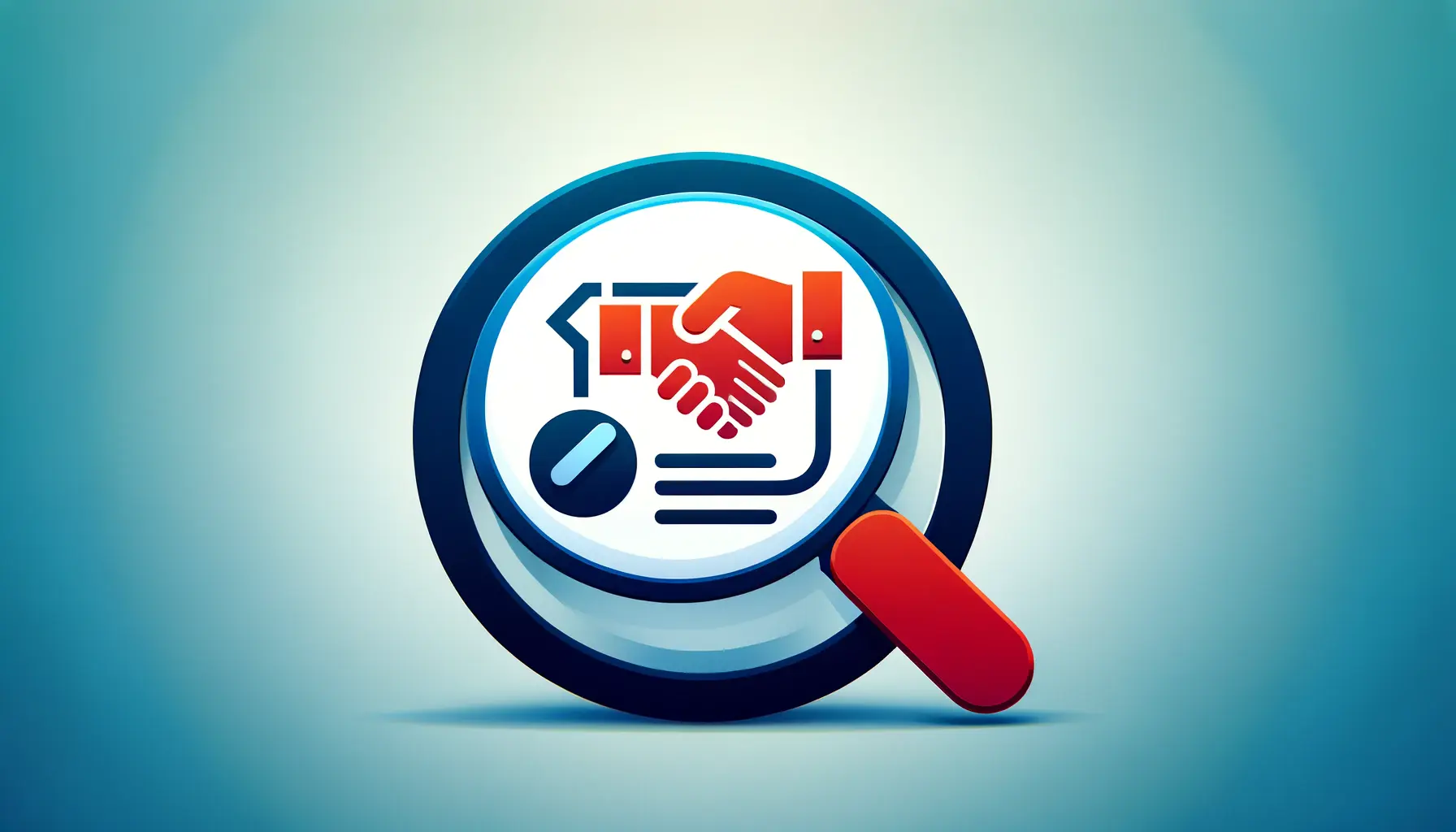Conversion rate optimization (CRO) is a critical component in the digital marketing strategy of any service-based website.
It focuses on enhancing the user experience to encourage visitors to take a specific action, such as filling out a contact form, signing up for a newsletter, or making a booking.
With the main keyword being “conversion,” it’s clear that the ultimate goal is to convert casual browsers into committed clients, thereby boosting the website’s effectiveness and profitability.
In today’s competitive online landscape, simply attracting visitors to your website is not enough.
Service-based businesses, in particular, face the challenge of not only drawing in traffic but also convincing potential clients of the value of their services.
This is where CRO comes into play, serving as a bridge between traffic acquisition and customer acquisition.
By focusing on optimizing every aspect of the visitor’s journey, businesses can significantly increase their chances of converting leads into loyal customers.
- Understanding the Basics of CRO
- Optimizing Website Design and Layout
- Content Optimization for Engagement and Conversion
- Implementing Effective Call-to-Actions (CTAs)
- Utilizing Analytics for CRO Insights
- Enhancing User Experience (UX) for Better Conversions
- Building Trust and Credibility Online
- Maximizing Conversion Rate Optimization for Service-Based Websites
- FAQs on Conversion Rate Optimization for Service-Based Websites
Understanding the Basics of CRO
At its core, conversion rate optimization is about making your website as appealing and user-friendly as possible to your target audience.
This involves a deep understanding of your visitors’ needs, preferences, and behaviors, and then tailoring your website’s design, content, and user experience to meet those needs.
The process is data-driven, relying on analytics and user feedback to guide improvements and measure success.
One of the first steps in a successful CRO strategy is identifying the key conversion points on your website.
These are the actions you want visitors to take, which could range from contacting your business for more information to scheduling an appointment.
Once these points are established, the focus shifts to optimizing the paths users take to reach them.
This could involve simplifying navigation, enhancing the clarity of your service offerings, or improving the visibility of call-to-action (CTA) buttons.
Key Elements of a CRO Strategy
Several elements play crucial roles in the conversion rate optimization process for service-based websites.
These include website design, content quality, site speed, and user experience (UX).
A well-designed website that’s easy to navigate and provides clear information about services offered is more likely to retain visitors and encourage conversions.
Similarly, high-quality, relevant content that addresses the needs and questions of your target audience can significantly boost engagement and conversion rates.
Site speed is another critical factor, as slow-loading pages can lead to high bounce rates and lost opportunities.
Optimizing images, leveraging browser caching, and minimizing the use of heavy scripts can help improve loading times and keep visitors engaged.
Lastly, a positive user experience is essential for conversions.
This means creating a website that’s accessible, mobile-friendly, and provides a seamless journey from the first click to the final conversion action.
A successful CRO strategy for service-based websites hinges on a deep understanding of the target audience and a commitment to continuous improvement based on data-driven insights.
Optimizing Website Design and Layout
For service-based websites, the design and layout play pivotal roles in guiding visitors towards conversion.
An intuitive, aesthetically pleasing design not only captures the attention of visitors but also makes the navigation towards conversion points seamless and straightforward.
Here, we delve into how optimizing your website’s design and layout can significantly enhance conversion rates.
Firstly, the visual appeal of your website sets the first impression for your visitors.
A clean, professional design instills trust and confidence in your services.
However, beyond aesthetics, the functional aspects of your design—such as ease of navigation, clear hierarchy, and accessibility—are what truly drive conversions.
Let’s explore some key strategies for optimizing your website’s design and layout:
Strategies for Design Optimization
- Responsive Design: Ensure your website is mobile-friendly, adapting seamlessly to different screen sizes. This is crucial as a significant portion of internet traffic comes from mobile devices.
- Clear Navigation: Simplify your site’s navigation to make it easy for visitors to find what they’re looking for. A well-structured menu, search functionality, and a logical page hierarchy guide users smoothly through your site.
- Optimized Conversion Paths: Design your website with clear conversion paths. This means minimizing the number of steps a user must take to complete a conversion action, such as filling out a contact form or scheduling a service.
Enhancing User Experience (UX)
Optimizing the user experience is about understanding and anticipating the needs of your visitors.
It involves creating a website that not only looks good but also functions efficiently and effectively.
Here are some actionable tips for enhancing UX on your service-based website:
- Speed Optimization: Improve your website’s loading times by compressing images, leveraging browser caching, and minimizing the use of heavy scripts.
- Content Clarity: Ensure that your website content is clear, concise, and effectively communicates the value of your services. Use headings, bullet points, and short paragraphs to make content easily digestible.
- CTA Visibility: Make your call-to-action buttons stand out with contrasting colors and compelling text. Place them strategically throughout your website to guide users towards conversion.
Remember, the goal of optimizing your website’s design and layout is not just to make it look better, but to make it work better for your visitors, leading to higher conversion rates.
Content Optimization for Engagement and Conversion
Content plays a crucial role in engaging visitors and guiding them towards conversion on service-based websites.
It’s not just about what you say, but how you say it.
Effective content communicates the value of your services, addresses the needs and concerns of your audience, and positions your brand as the best solution.
Here, we explore strategies for optimizing your website content to boost engagement and conversion rates.
Creating Compelling Service Descriptions
Your service descriptions are often the first detailed interaction potential clients have with your offerings.
To optimize these descriptions for conversion:
- Highlight Benefits: Focus on the benefits of your services rather than just the features. Explain how your services solve problems or improve situations for your clients.
- Use Persuasive Language: Employ persuasive writing techniques that encourage action. Words like “discover,” “achieve,” and “transform” can be powerful motivators.
- Include Social Proof: Incorporate testimonials, case studies, or statistics within your service descriptions to build trust and credibility.
Optimizing Blog Content for SEO and User Engagement
A blog can be a powerful tool for attracting visitors to your service-based website and converting them into clients.
To optimize your blog content:
- Target Relevant Keywords: Use SEO tools to find keywords that your target audience is searching for. Incorporate these keywords naturally into your blog posts to improve search visibility.
- Provide Value: Create content that addresses the questions, needs, and interests of your audience. Useful, informative content can establish your brand as an authority in your field.
- Encourage Engagement: End your posts with a call-to-action that encourages readers to engage further, whether it’s contacting you for more information, signing up for a newsletter, or downloading a guide.
Leveraging Multimedia Content
Multimedia content, such as videos, infographics, and images, can significantly enhance user engagement and convey information in an easily digestible format.
To leverage multimedia content effectively:
- Use Videos to Explain Services: Create short, engaging videos that explain your services, showcase your team, or provide client testimonials.
- Infographics for Quick Insights: Use infographics to summarize key benefits, processes, or statistics related to your services. They’re shareable and can help drive traffic to your site.
- Quality Images: Include high-quality, relevant images throughout your content. Images can break up text, illustrate points, and improve the overall aesthetic of your website.
Consider your content as a journey, guiding visitors from initial interest to the decision to engage with your services. Every piece of content should serve a purpose in this journey, moving potential clients closer to conversion.
Implementing Effective Call-to-Actions (CTAs)
Call-to-Actions (CTAs) are the linchpin of conversion rate optimization, serving as the guideposts that lead visitors towards taking the desired action.
An effective CTA not only catches the eye but also compels the visitor to click, sign up, contact, or make a purchase.
Crafting and placing CTAs strategically throughout your service-based website can significantly impact your conversion rates.
Designing Compelling CTAs
The design of your CTA can make a substantial difference in its effectiveness.
To design compelling CTAs:
- Use Action-Oriented Language: Start with a verb that prompts action, such as “Get,” “Start,” “Discover,” or “Learn.”
- Make It Visually Striking: Use colors that stand out from the rest of your page but still align with your brand. The size should be large enough to be noticed without overwhelming the content.
- Keep It Simple: The message should be clear and concise, telling visitors exactly what they will get by clicking.
Strategic Placement of CTAs
Where you place your CTAs can affect their visibility and the likelihood of action.
Consider these strategies for placement:
- Above the Fold: Ensure at least one CTA is visible without scrolling to capture immediate attention.
- Within Blog Posts: Embed CTAs within or at the end of blog posts to capture engaged readers.
- On Service Pages: Place clear CTAs on each service page, guiding users towards taking the next step, whether it’s contacting your team or scheduling a consultation.
Testing and Optimizing CTAs
Not all CTAs will perform equally, making testing and optimization critical components of your strategy.
Consider these approaches:
- A/B Testing: Test different versions of your CTAs to see which designs, placements, and messages yield the best conversion rates.
- Use Heatmaps: Heatmap tools can show you how users interact with your CTAs, providing insights into how they can be improved.
- Analyze Performance: Regularly review your CTA performance metrics to identify trends and make data-driven decisions for optimization.
An effective CTA is clear, compelling, and makes it easy for visitors to take the next step. By continuously testing and optimizing your CTAs, you can significantly improve the conversion rate of your service-based website.
Utilizing Analytics for CRO Insights
Analytics play a crucial role in conversion rate optimization (CRO) by providing the data needed to understand how visitors interact with your service-based website.
Utilizing analytics effectively allows you to identify areas for improvement, understand user behavior, and make informed decisions that can lead to increased conversions.
Key Metrics to Monitor
To harness the power of analytics for CRO, focus on monitoring key metrics that directly impact conversion rates:
- Bounce Rate: High bounce rates can indicate that visitors are not finding what they expect or that the page is not engaging enough.
- Exit Pages: Identifying where users are leaving your site can help pinpoint pages that need optimization to keep visitors engaged longer.
- Conversion Paths: Analyzing the paths users take before converting can reveal successful journeys and areas where users drop off.
- Goal Completion: Tracking specific goals, such as form submissions or service inquiries, measures the effectiveness of your conversion strategies.
Implementing A/B Testing
A/B testing is a powerful tool within analytics that allows you to compare two versions of a web page to see which performs better in terms of conversions.
Implementing A/B testing involves:
- Choosing a Variable: Select one element to change, such as the headline, CTA design, or page layout.
- Creating Variants: Develop two versions of the page, one with the original element and one with the modified element.
- Running the Test: Direct equal traffic to both versions and measure which one achieves better conversion rates.
Leveraging Heatmaps for User Behavior Insights
Heatmaps provide visual representations of where users click, scroll, and spend time on your website.
This insight is invaluable for understanding how visitors interact with your content and layout.
Leveraging heatmaps can help you:
- Identify Hotspots: See which areas of your website attract the most attention and ensure they contain key information or CTAs.
- Optimize Page Layout: Adjust the placement of elements based on user interaction patterns to improve the user experience and guide users towards conversion.
- Improve Content Engagement: Use heatmap data to refine the placement and presentation of content to better engage visitors.
Analytics offer a window into the effectiveness of your website and CRO efforts. By closely monitoring key metrics, implementing A/B testing, and leveraging heatmaps, you can gain valuable insights into user behavior and optimize your site for higher conversions.
Enhancing User Experience (UX) for Better Conversions
The user experience (UX) of your website significantly influences the likelihood of visitors converting into clients.
A positive UX ensures that visitors can easily find what they’re looking for, understand your services, and take the desired action without frustration.
Enhancing UX is a multifaceted approach that involves simplifying navigation, speeding up load times, and ensuring content relevance and engagement.
Simplifying Website Navigation
A straightforward and intuitive navigation structure allows visitors to effortlessly explore your website and discover your services.
To simplify your website’s navigation:
- Limit Menu Items: Too many options can overwhelm visitors. Keep your menu items to a minimum, focusing on your main services and information.
- Logical Structure: Organize your menu logically, grouping related services together and using descriptive labels that clearly communicate the content of the pages.
- Search Functionality: Include a search bar to help visitors quickly find specific information or services, improving the overall user experience.
Improving Site Speed
Website speed is a critical component of UX.
Slow-loading pages can lead to increased bounce rates and lost conversion opportunities.
To improve your site’s speed:
- Optimize Images: Compress images to reduce their file size without significantly impacting quality, speeding up page load times.
- Minimize HTTP Requests: Reduce the number of elements on each page, such as scripts, stylesheets, and images, to decrease load time.
- Use a Content Delivery Network (CDN): CDNs distribute your content across multiple servers worldwide, reducing the distance between visitors and your website’s server to improve load times.
Creating Engaging and Relevant Content
Content that resonates with your audience not only keeps them engaged but also guides them towards making a conversion.
To create engaging and relevant content:
- Understand Your Audience: Develop content that addresses the needs, questions, and interests of your target audience, making it more likely for them to engage with your services.
- Use Various Content Formats: Incorporate a mix of text, images, videos, and infographics to cater to different preferences and improve engagement.
- Clear and Concise Messaging: Ensure your content is easy to understand and gets to the point quickly, highlighting the benefits of your services and what sets you apart from competitors.
Assuming that all visitors will convert without a thoughtfully designed UX is a common mistake. By focusing on simplifying navigation, improving site speed, and creating engaging content, you can significantly enhance the user experience and increase your conversion rates.
Building Trust and Credibility Online
Trust and credibility are foundational elements that influence a visitor’s decision to convert on a service-based website.
In the digital realm, where personal interactions are limited, your website must communicate trustworthiness and establish credibility to encourage conversions.
Implementing specific strategies can significantly impact your ability to build a strong relationship with potential clients.
Incorporating Testimonials and Reviews
Testimonials and reviews are powerful tools for building trust with potential clients.
They provide social proof, demonstrating the value and quality of your services through the experiences of others.
To effectively incorporate testimonials and reviews:
- Highlight Positive Experiences: Feature testimonials from satisfied clients prominently on your website, especially on service pages and near CTAs.
- Use Real Names and Photos: Whenever possible, include the full name, photo, and position of the testimonial giver to add authenticity.
- Encourage Reviews: Actively encourage your clients to leave reviews on your website or third-party platforms and make the process as easy as possible.
Displaying Certifications and Awards
Certifications, awards, and recognitions serve as endorsements of your expertise and professionalism.
Displaying these accolades on your website can enhance your credibility.
Consider these tips:
- Create a Dedicated Section: Dedicate a section of your website to showcase your certifications, awards, and any industry recognitions you have received.
- Update Regularly: Keep this section updated with your latest achievements to show ongoing commitment to excellence.
- Explain the Significance: Briefly explain the significance of each certification or award to help visitors understand the value they represent.
Ensuring Transparency and Security
Transparency about your services, pricing, and processes, along with ensuring the security of your website, are crucial for building trust.
To ensure transparency and security:
- Clear Service Descriptions: Provide clear, detailed descriptions of your services, including what clients can expect and any relevant pricing information.
- Secure Your Website: Use HTTPS encryption, display security badges, and ensure your site is compliant with privacy laws to protect your visitors’ information.
- Easy Contact Options: Make it easy for visitors to contact you with questions or concerns. Include multiple contact options, such as phone, email, and a contact form.
Building trust and credibility online is an ongoing process that requires consistent effort and transparency. By showcasing real testimonials, highlighting your achievements, and ensuring your website’s security, you can create a trustworthy online presence that encourages conversions.
Maximizing Conversion Rate Optimization for Service-Based Websites
Throughout this exploration of conversion rate optimization (CRO) for service-based websites, we’ve delved into the multifaceted strategies that can significantly enhance your website’s ability to convert visitors into clients.
From the foundational importance of understanding CRO basics to the nuanced approaches of building trust and credibility online, each aspect plays a critical role in the overarching goal of increasing conversions.
The journey towards optimizing your service-based website for better conversions is both comprehensive and continuous, requiring a keen understanding of your audience, a commitment to enhancing user experience, and a dedication to refining and testing your strategies.
Key Takeaways for Effective CRO
In summary, the path to achieving and maintaining high conversion rates on your service-based website involves:
- Deeply understanding your audience to tailor your website’s design, content, and user experience to their needs and preferences.
- Implementing clear, compelling CTAs that guide users towards taking the desired action, supported by strategic placement and continuous testing for optimization.
- Leveraging analytics to gain insights into user behavior and conversion trends, enabling data-driven decisions that refine your CRO efforts.
- Enhancing the overall user experience by simplifying navigation, improving site speed, and creating engaging, relevant content that resonates with your target audience.
- Building trust and credibility through the strategic use of testimonials, certifications, and transparent communication, thereby establishing a strong foundation for lasting client relationships.
As we’ve seen, conversion rate optimization for service-based websites is not a one-size-fits-all endeavor.
It requires a tailored approach that considers the unique aspects of your services, your target audience, and your business goals.
By focusing on these critical areas and continuously monitoring and adjusting your strategies based on performance data, you can significantly improve your website’s conversion rates.
Remember, the ultimate goal of CRO is to create a seamless, engaging, and trustworthy online experience that not only attracts visitors but also convinces them to take the next step in their customer journey with your service.
In conclusion, the journey of optimizing your service-based website for better conversions is ongoing and ever-evolving.
By embracing the strategies discussed, staying abreast of the latest trends and technologies in CRO, and maintaining a focus on creating a positive user experience, you can achieve and surpass your conversion goals.
The effort and resources invested in conversion rate optimization are invaluable, as they directly contribute to the growth and success of your service-based business in the digital landscape.
Want your website to top Google search rankings? Leave the SEO to our professional agency!
FAQs on Conversion Rate Optimization for Service-Based Websites
Explore commonly asked questions about enhancing your service-based website’s conversion rates.
CRO is a process aimed at increasing the percentage of website visitors who take a desired action, enhancing overall conversions.
CRO is crucial for maximizing the effectiveness of your website, turning visitors into clients, and improving your service’s visibility.
Begin by understanding your audience, analyzing website data, and identifying key conversion points and paths on your site.
A well-designed website enhances user experience, making it easier for visitors to navigate and take desired actions.
Yes, high-quality, relevant content engages visitors, addressing their needs and guiding them towards conversion.
Effective CTAs are clear, action-oriented, and strategically placed to guide users towards making a conversion.
A positive UX ensures visitors can easily find and engage with your content, significantly increasing conversion likelihood.
Trust and credibility encourage visitors to take action, as they feel confident in the quality and reliability of your services.













